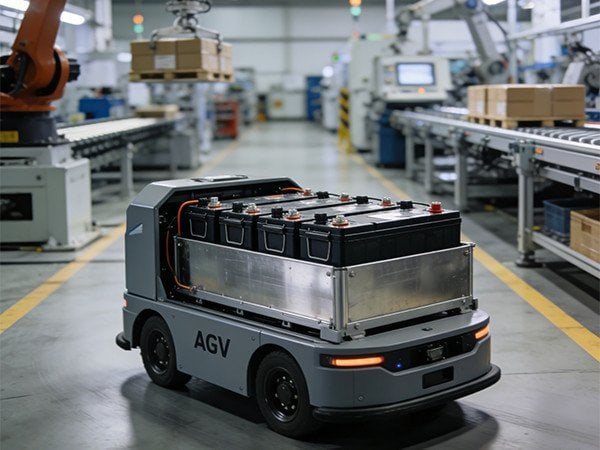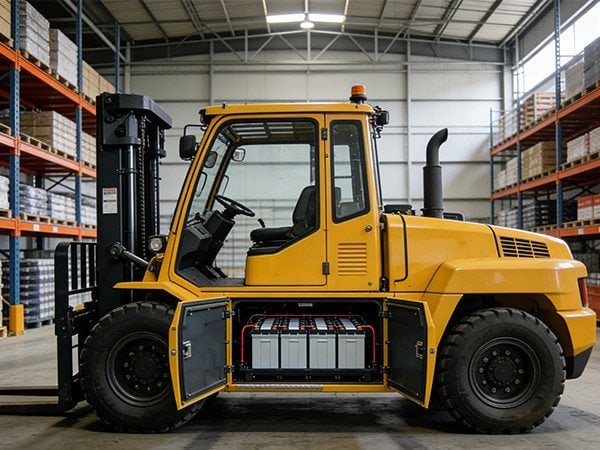강력하고 컴팩트하며 안정적인 모든 배터리 팩 뒤에는 고도로 제어되고 정밀한 제조 공정이 있습니다. 이 문서에서는 리튬 배터리 팩 조립 방법에 대한 포괄적인 개요를 제공하며, 셀 선택부터 최종 테스트 및 패키징에 이르는 각 단계를 중점적으로 설명합니다.

배터리 셀 선택
배터리 팩 조립 과정은 리튬 셀을 선택하는 것부터 시작됩니다. 가장 일반적으로 사용되는 세 가지 유형의 리튬 이온 셀은 다음과 같습니다:
원통형 셀(예: 18650, 21700)
프리즘 셀
파우치 셀
각 셀 유형은 에너지 밀도, 열 관리 및 구조적 통합 측면에서 서로 다른 이점을 제공합니다. 예를 들어, 고출력 전기차에는 21700 원통형 셀을 사용할 수 있지만 공간 제약이 있는 장치에는 프리즘형 또는 파우치형 셀을 선호할 수 있는 등 셀 선택은 애플리케이션에 따라 달라집니다.
주요 고려 사항:
전압 및 용량 등급
내부 저항
성능의 일관성(일치하는 셀)
제조업체 신뢰성 및 안전 인증
셀은 조립 전에 균일한 성능을 보장하기 위해 품질 테스트를 거칩니다. 전압, 내부 저항 또는 용량의 불균형은 비효율성과 안전 위험을 초래할 수 있습니다.
셀 채점 및 정렬
셀이 선택되면 정렬 또는 등급이 매겨집니다. 이 단계에서는 전기적 특성이 유사한 셀만 배터리 팩에 함께 그룹화하여 성능과 안전성을 최적화합니다.
정렬 기준:
전압 범위
내부 저항
용량(mAh 또는 Ah)
제조 날짜 및 배치
자동화 장비는 첨단 알고리즘과 로봇 팔을 사용하여 많은 양의 세포를 정확하게 처리하기 위해 이 프로세스를 수행하는 경우가 많습니다.
배터리 팩 설계 및 구성
배터리 팩이 전력, 전압, 전류, 크기, 무게, 열 관리에 대한 애플리케이션의 요구 사항을 충족하려면 설계가 중요합니다.
일반적인 구성:
직렬 연결(S): 전압을 높입니다.
병렬 연결(P): 전류/용량 증가
예를 들어 13S4P 구성은 13개의 셀을 직렬로 연결하고 4개의 셀을 병렬로 연결한다는 의미입니다. 엔지니어는 시뮬레이션 소프트웨어를 사용하여 가장 효율적이고 안전한 설계를 결정합니다.
기계적 구조:
셀 홀더 및 브래킷
절연 레이어
충격에 강한 케이스
열 관리 채널
셀 스폿 용접 및 상호 연결
레이아웃이 확정되면 셀을 제자리에 고정하고 니켈 스트립이나 구리 도체를 사용하여 전기적으로 연결합니다.
스폿 용접 프로세스:
니켈 스트립이 셀 단자 위에 배치됩니다.
고전류 펄스가 국부적인 열을 발생시켜 스트립을 셀에 용접합니다.
용접부는 강하고 전도성이 좋으며 깨끗해야 합니다.
레이저 용접은 정밀도와 열 영향 감소로 인기를 얻고 있습니다.
배터리 관리 시스템(BMS) 통합
배터리 관리 시스템(BMS)은 배터리 팩의 작동을 모니터링하고 제어하는 중요한 구성 요소입니다.
BMS의 기능:
전압, 온도 및 전류 모니터링
셀 간 전하 균형 조정
과충전, 과방전, 과전류 및 단락으로부터 보호 제공
외부 시스템(CAN 버스 또는 UART)과의 통신
배선 하니스는 정확한 모니터링을 위해 BMS를 각 셀 시리즈에 연결합니다. BMS 보드는 일반적으로 배터리 팩의 상단 또는 측면에 부착됩니다.
단열 및 열 관리
배터리 팩 설계에서 가장 중요한 것은 안전입니다. 열 폭주 및 단락을 방지하려면 적절한 단열재와 방열 시스템이 필수적입니다.
단열 기술:
세포 사이의 캅톤 또는 생선 종이
팩 주변의 열수축 튜브
충격 흡수를 위한 폼 패딩
열 솔루션:
공기 냉각 채널
방열판 또는 알루미늄 플레이트
상변화 물질 또는 액체 냉각(고성능 애플리케이션용)
인클로저 및 기계 조립
조립된 셀, 배선 및 BMS는 물리적 손상, 습기 및 먼지로부터 팩을 보호하기 위해 보호 케이스로 둘러싸여 있습니다.
사례 유형:
플라스틱 사출 성형 인클로저
알루미늄 합금 케이스
맞춤형 3D 프린팅 홀더(소규모 생산용)
케이스는 초음파 용접 또는 산업용 접착제로 밀봉되며, 안전을 위해 통풍구 또는 압력 방출 밸브가 포함되기도 합니다.
테스트 및 품질 관리
모든 리튬 배터리 팩은 배송 전에 엄격한 테스트를 거칩니다.
전기 테스트:
전압 및 용량 확인
충전/방전 주기 테스트
부하 및 임피던스 확인
안전 테스트:
단락 보호
과전압 및 저전압 응답
부하 시 온도 상승
육안 검사:
스폿 용접 무결성
커넥터 정렬
케이스 결함
많은 제조업체가 일관성과 추적성을 보장하기 위해 자동화된 테스트 스테이션을 사용합니다.
라벨 제작 및 규정 준수
국제 안전 및 운송 규정을 준수하려면 배터리 팩에 적절한 라벨을 부착해야 합니다. 여기에는 다음이 포함됩니다:
정격 전압 및 용량
제조업체 이름 및 연락처 정보
규정 준수 마크(예: CE, UL, UN38.3)
추적성을 위한 QR코드 또는 바코드
UN38.3 테스트는 항공 운송용 배터리의 경우 특히 중요합니다.
포장 및 물류
마지막 단계는 배송을 위해 배터리를 포장하는 것입니다. 정전기 방지 가방, 폼 인서트, 튼튼한 상자를 사용하여 물리적 또는 정전기 손상을 방지합니다.
일부 배송에는 다음이 필요합니다:
위험물 신고
특수 라벨링(예: "리튬 배터리 내부")
통관을 위한 맞춤 문서
배터리 팩 조립의 트렌드와 혁신
배터리 산업은 자동화, AI, 지속가능성이 차세대 팩 생산을 주도하면서 빠르게 진화하고 있습니다.
리튬 배터리 팩 조립은 고도로 기술적이고 품질에 민감한 공정입니다. 셀 선택 및 구성부터 BMS 통합 및 안전 테스트에 이르기까지 각 단계는 최종 제품의 안전성, 내구성 및 고성능을 보장하는 데 중요한 역할을 합니다.







